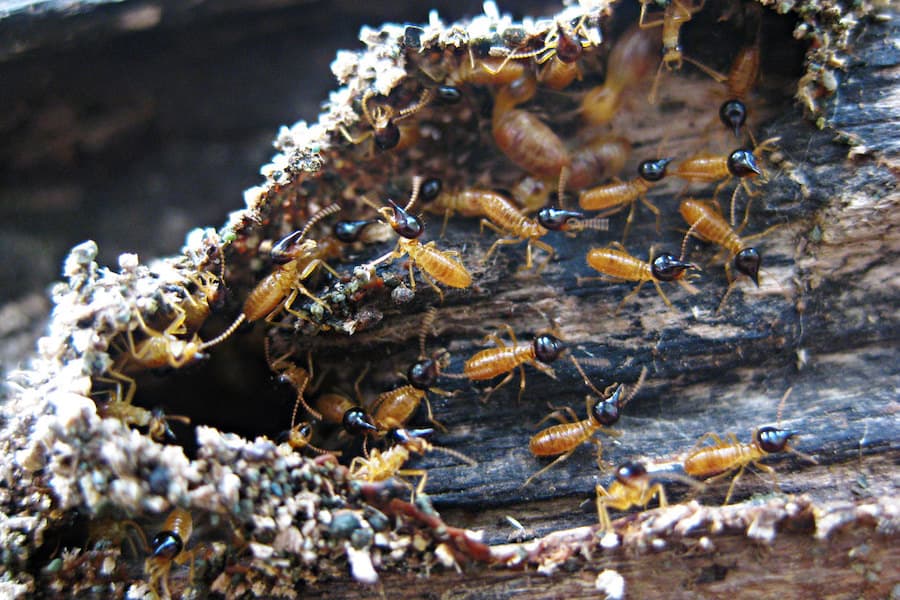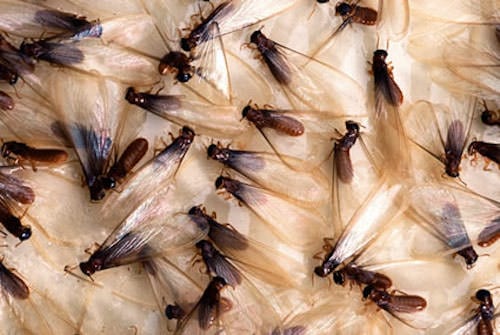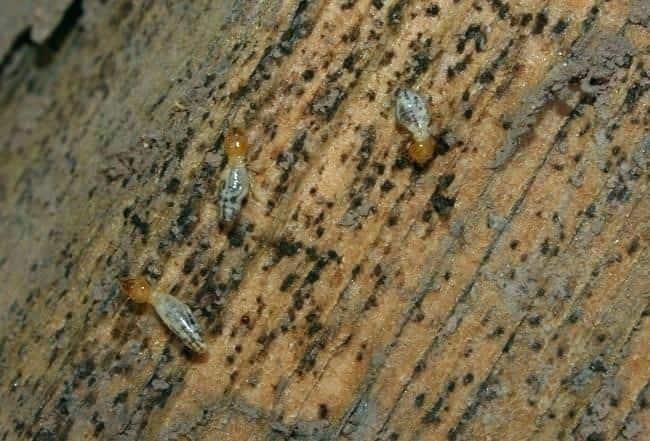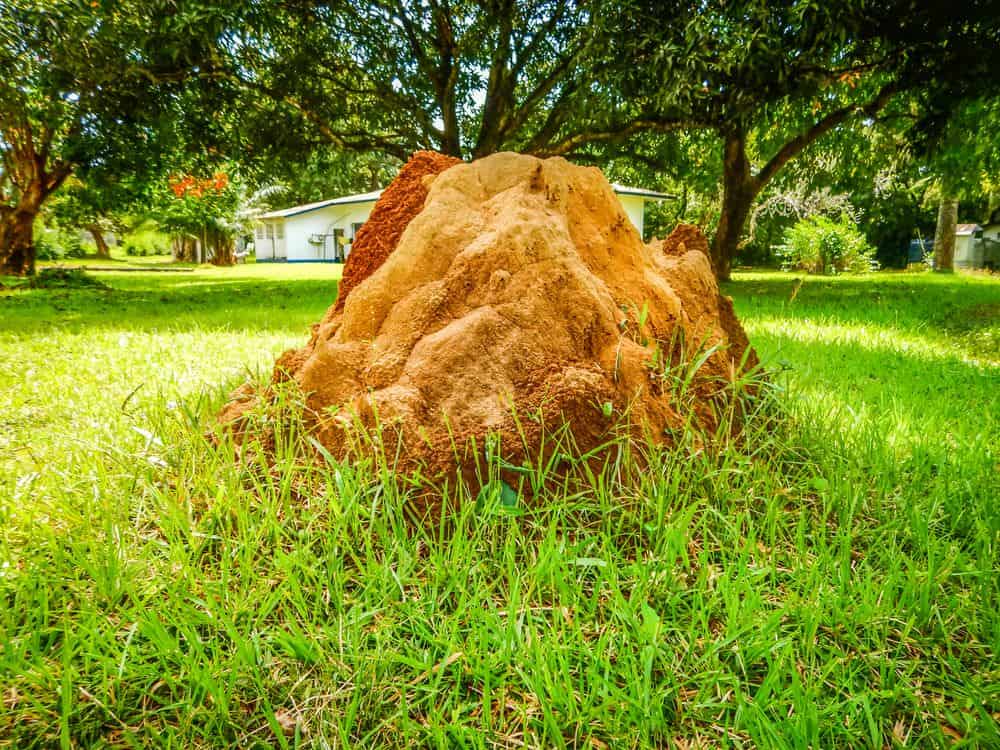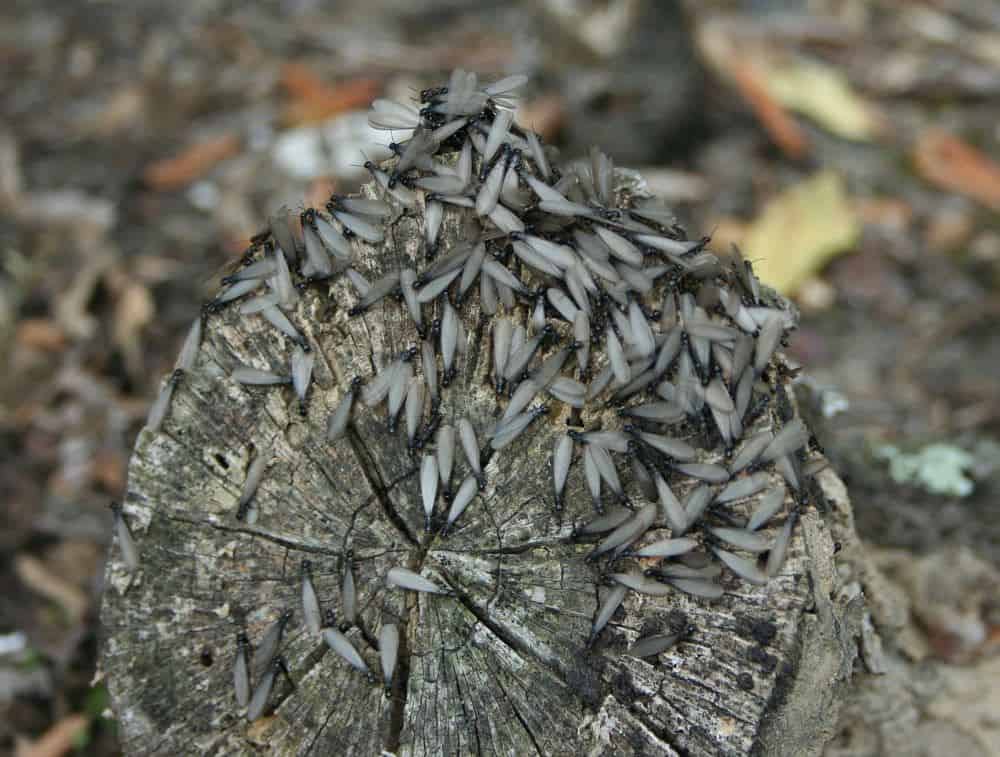Termites Vs Ants
You find a pest in your home or on your property that looks suspiciously like a termite. You aren’t sure, though, and it’s possible it’s “just” a flying ant. You may be thinking, termite or ant, it’s not good—either way.
Even so, it’s in your best interest to identify whether you have flying ants or termites. Before you even get started on pest control, you want to make sure you know exactly what you’re dealing with. This will also help you anticipate the kind of damage your home and property has been exposed to.
If you’re looking for more information on how to tell a flying ant and termite apart, this article is for you. I’ve encountered both during my time in pest control, and I’ll give you some easy ways to identify them. After you’ve determined your pest, you can pull up some of the articles I have here about ways to control them.
What Do Termites Look Like?
Pest identification isn’t fun, but knowing what you’re looking at and working with makes it worth it. Sometimes you won’t be looking at specific damage and will have just the actual pest to identify your problem. If that’s the case, here’s what you need to know about how termites look and act.
The termite will have straight antennae and four wings of equal length.
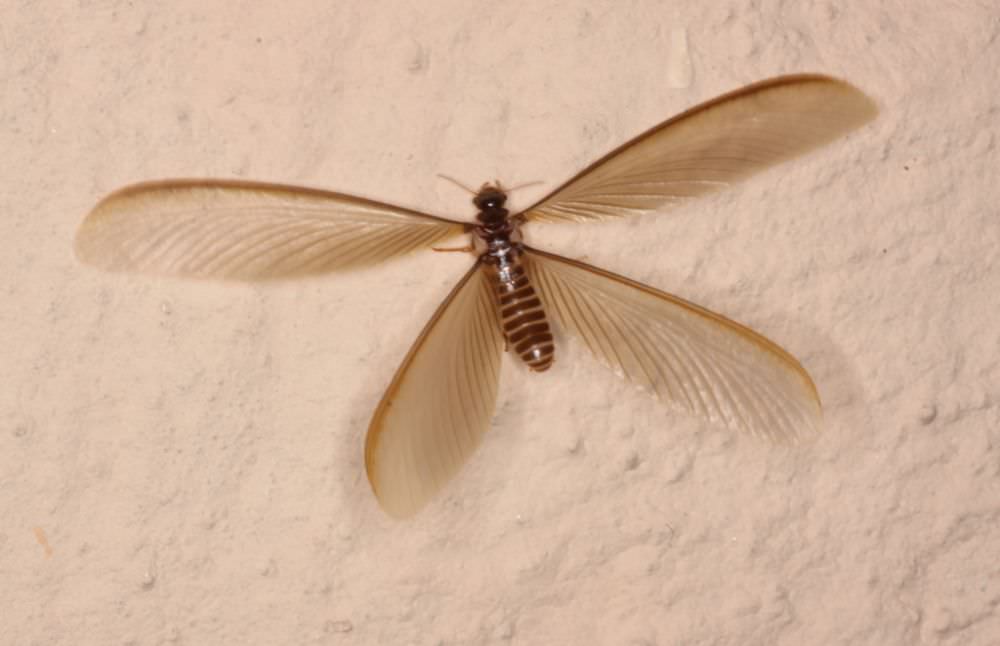
There’s no discernible waist—their bodies are straight, like a thin rectangle. Termites are black or dark brown and their wings will be clear. The worker termites are a lighter color, while the swarming termites will be significantly darker.
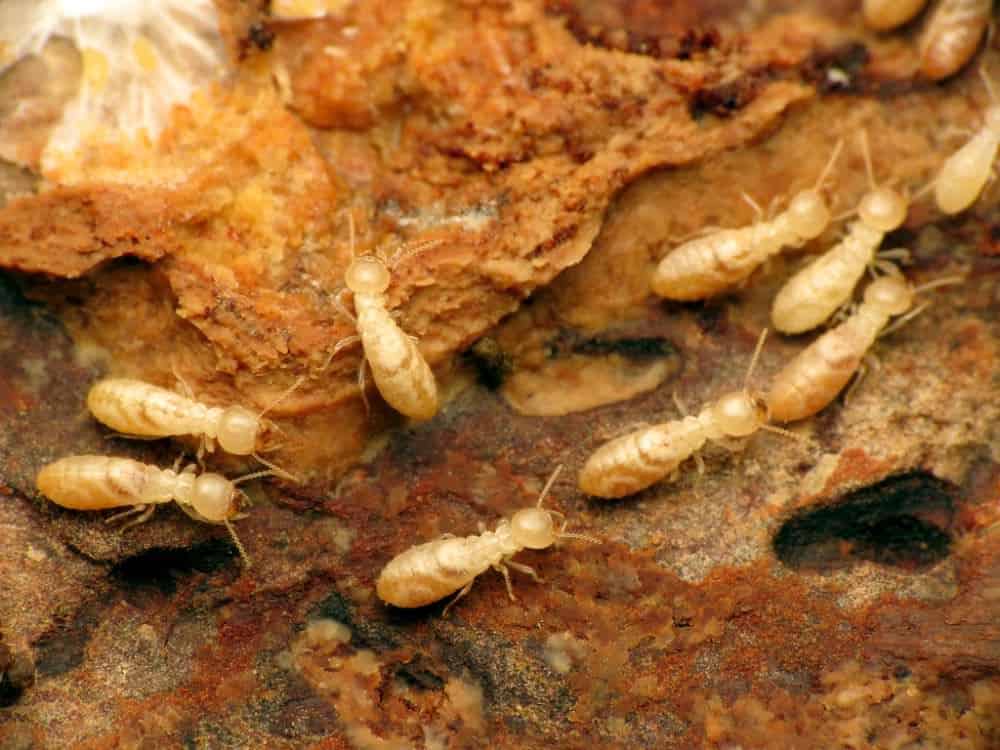
Termites participate in a caste system. There are three roles they might fall into—workers, soldiers, or alates (the latter are the flying swarmer termites). Each caste type will have a slightly different appearance and do different things within their colony.
The worker termite is the smallest, and the palest, of the group. They generally have a larvae-type look to them. Their bodies are soft and they may have a gray or translucent coloring. You aren’t likely to see much of these because they are hard at work somewhere deep in your wooden structures.
Soldier termites have a distinctive looking head, though their bodies look similar to worker termites. Their heads are generally a darker color than the rest of their body, and they have large claw-like mouthparts (mandibles). They use these to help protect the colony. Like the worker termites, you won’t come across the soldiers very often unless you’re at the core of the colony.
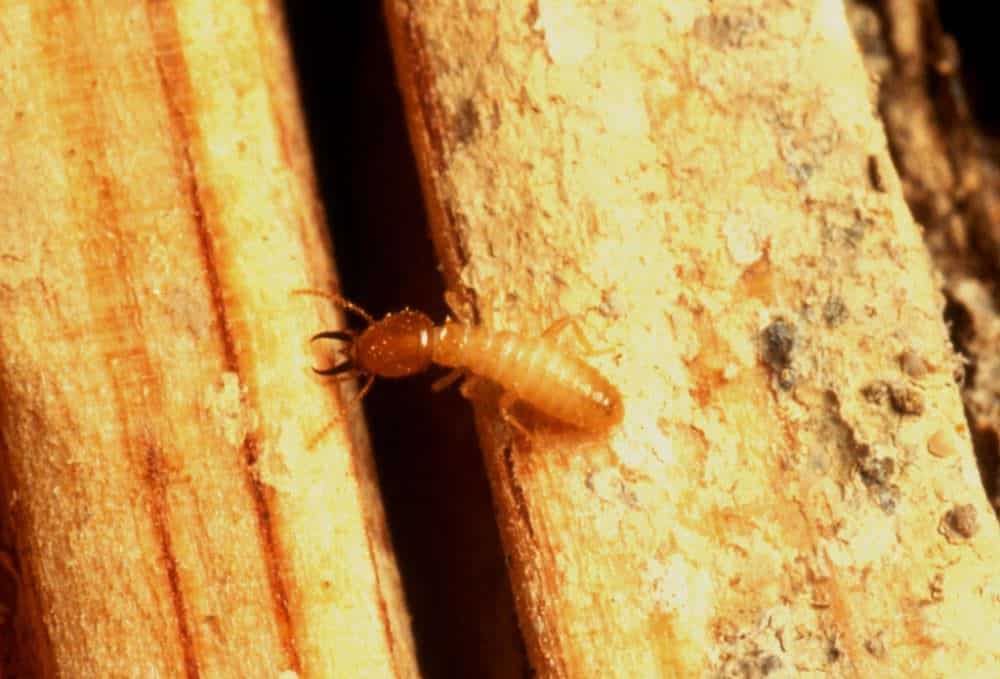
The alates are the termite you are most likely to encounter. They have a hard exoskeleton to protect their bodies and will be the darkest of the castes. When the colony is ready to expand, these termites are sent out to establish a new one.
These are fully mature, reproductive termites. Their only mission is to reproduce and expand their colony. When you see them, they will probably be in a group. Keep in mind that the existing colony they came from has reached a substantial size. You should try to determine where that colony has come from and then act quickly to destroy it.
As these are the termites you’ll see, this is the type of termite to really learn how to identify. Termite wings are prominent and distinct in their uniformity. Unlike many other flying insects, where the front wing extends further than the back, the termite’s wings are equal in length. These wings are quite long as well—almost twice the size of the termite body.
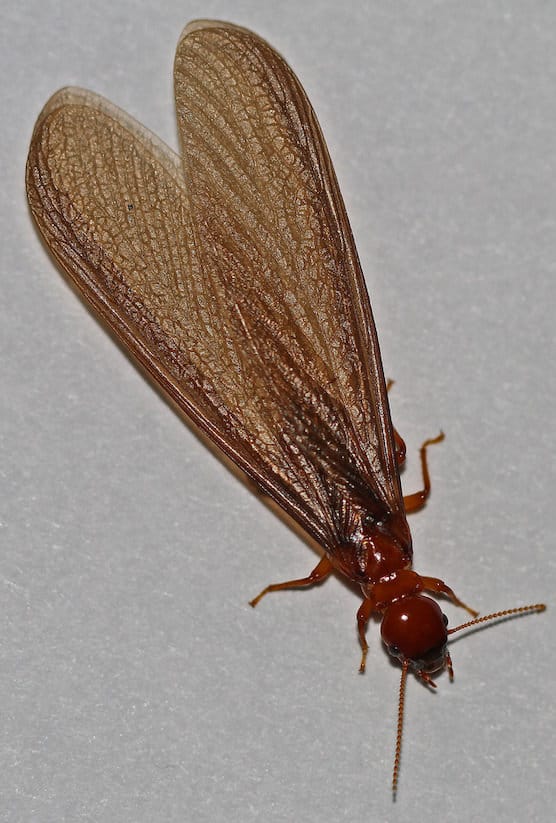
There are over 40 different types of termites in the United States. Whatever type you have on your premises, you can expect them to be between a quarter inch and half inch long. For photos and more information on different kinds of termites, this is a great resource.
While some of these termites may be small, they are all visible to the naked eye. Unexplained piles of sawdust around the house will also be an indicator that you’re dealing with termites.
What Do Flying Ants Look Like?
There are many things to keep in mind when considering flying ants. The first, most important thing, is that it’s not necessarily a specific type of ant.
That’s right—there are many different ants that are capable of growing wings. This generally happens at sexual maturity and during the breeding season. Seeing a flying ant can certainly come as a shock. We may be used to seeing them on the ground, but seeing them zip through the air is something else altogether.
For the sake of this article, we’ll be looking directly at the flying carpenter ant. Like the termite, this ant will also do damage to your wooden structures. There are different types of carpenter ants, but most of them are dark brown to black in color.
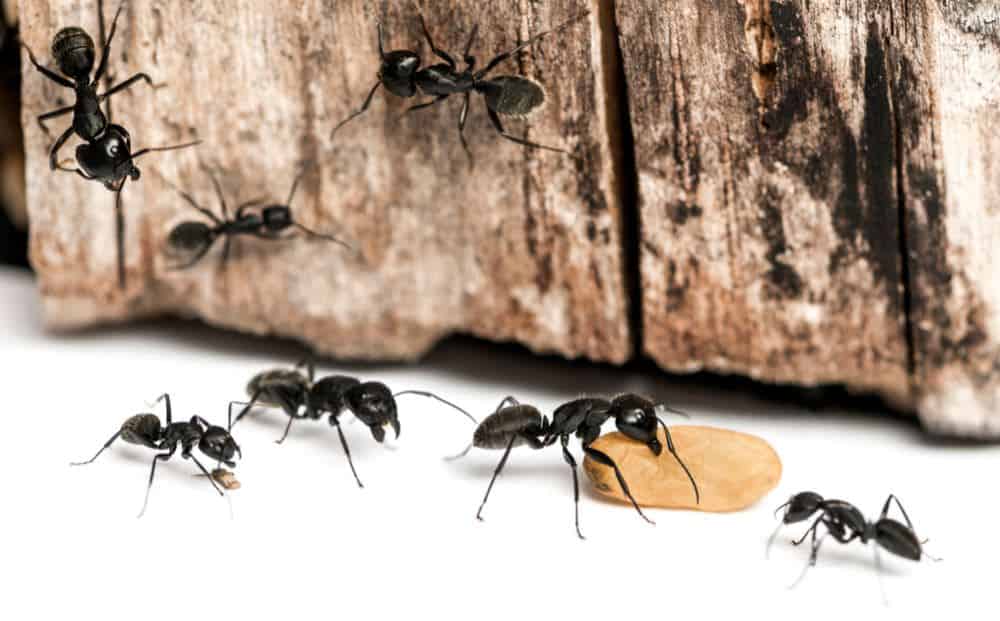
Carpenter ants are one of the largest ant species in the United States. Just like the termites, though, their size varies from caste to caste.
Worker carpenter ants will also measure between about a quarter inch and a half inch long. These are the carpenter ants you generally come across. The male carpenter ants are of a similar size—you will see these winged when they are on their nuptial flight.
At first glance, you may mistake the flying ant for the termite. Here are the key differences to look for when identifying a flying ant.
First, the antennae will be bent, not straight. The body will have a prominent waist and a segmented look. You’ll also find a set of uneven wings, where the front wings are longer than the back, in a classic butterfly shape.
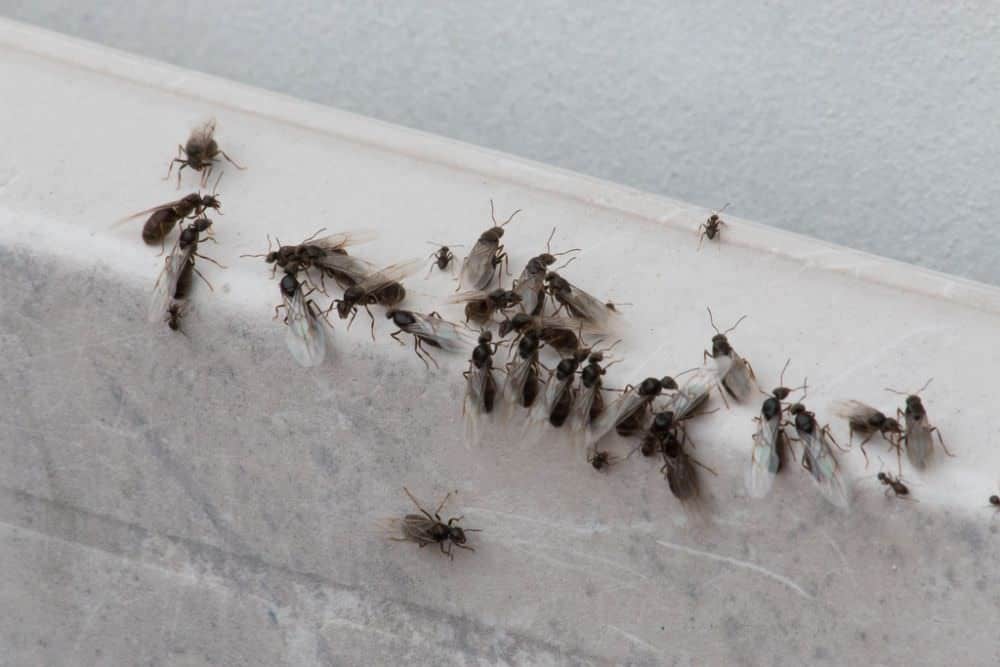
Flying ants are sexually mature ants looking to leave their colony and start a new one. Also known as alates, these are the ants that have been fed by the workers with the intent of producing more ants.
These reproductive ants live their time inside the colony until the colony is ready to expand. Their sole purpose is to begin a new colony and reproduce. Many refer to this event as the “nuptial flight.”
As indicated by their name, carpenter ants can cause great damage to wood. They usually set up shop in old, compromised wood. However, they may move into good wood if there’s an established colony. Like other ant species, the carpenter ants feed on proteins and sugars.
Carpenter ants mean your wooden structures are in jeopardy. Spot just one, and it is possible it’s a fluke. You should know, though, that carpenter ants are frequently solitary workers. Even if you’re only seeing one at a time, but it’s happening regularly, this could signify trouble. You need to assume you likely have a pest problem you can’t see.
Ants leaving the colony to mate usually do so in a swarm. These swarms help protect them from predators. The good news is it also makes them more visible to you. It’s hard to miss a giant group of flying insects.
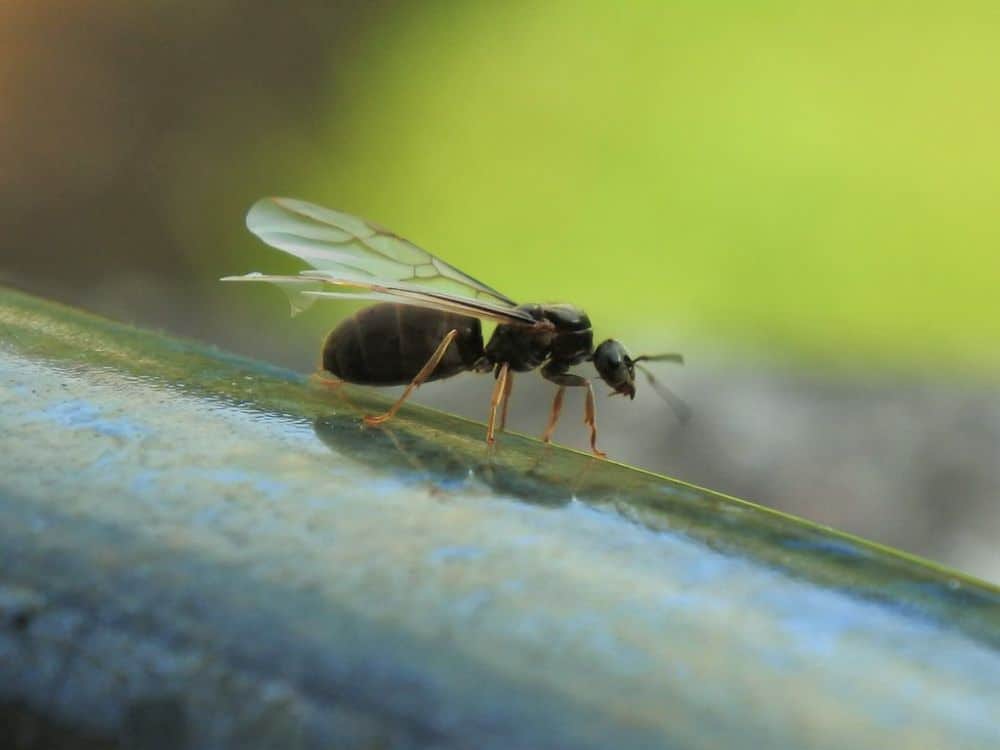
Ants out and about with wings indicates a fresh breeding season, but they don’t bring with them any additional concerns. At least not beyond the usual concerns you have with a crawling ant, that is. They are focused entirely on their quest to find a mate, and little will distract them.
It’s important to note that being able to fly will not change other aspects of the ant. If an ant is capable of biting before it has wings, it will be able to bite once it can fly as well. They won’t be more aggressive or acquire superpowers with their new wings, however.
Carpenter ants will only bite if they feel threatened. Their powerful jaws and their ability to spray formic acid into the wound can make their bites quite painful.
Similarities Between Flying Ants and Termites
It’s easy to see how flying ants and flying termites could be confused with one another. They are both dark, generally about the same size, and have a tendency to be active during the same time of year.
Both flying termites and flying ants participate in a caste system within their colony. They are both generally seen when the colony is expanding, and frequently in large numbers.
It’s tricky to identify a pest as it’s in flight. If you can catch one of these to examine, you’ll have the best chance of identifying them.
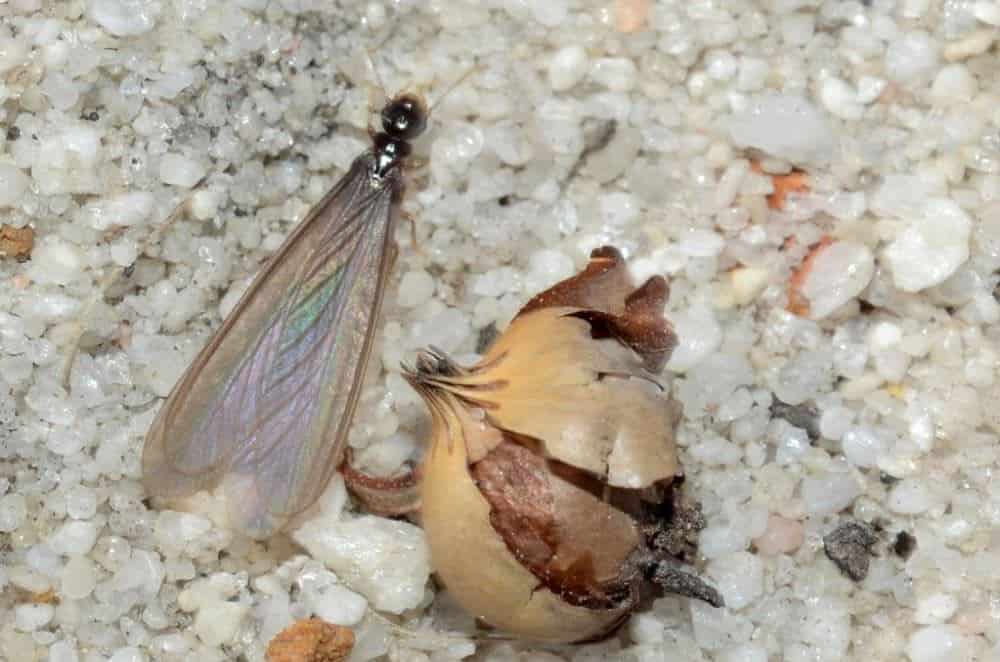
Both flying ants and termites both have four wings and two antennae. Both termites and carpenter ants are attracted to damp or compromised wooden areas. If they can get into your house easily, that’s a pretty significant attraction as well.
If you’re dealing with carpenter ants, you need to know they can be doing serious damage to your home—just like termites. Even if you have an exterior that’s not wooden—e.g., a composite, stone or brick—you likely have structural elements and floors that are made from wood.
One of the most unnerving things about both of these pests is that you seldom see the destruction they are inflicting on your home until it’s too late.
Differences Between Flying Ants and Termites
Sometimes it’s easier to notice the similarities than the differences. It’s the differences, though, that give away whether you’re dealing with termites or flying ants.
While both the termite and the flying ant have long, slender, bodies, the ant has an accentuated waist. The body is clearly segmented. You’ll recognize the flying ant because it looks just like an ant—with wings.
The termite has a narrow, blocky body, with no defined waist or segmentation. The antennae are straight, and not too long. The flying ant, on the other hand, has segmented antennae with a bend.
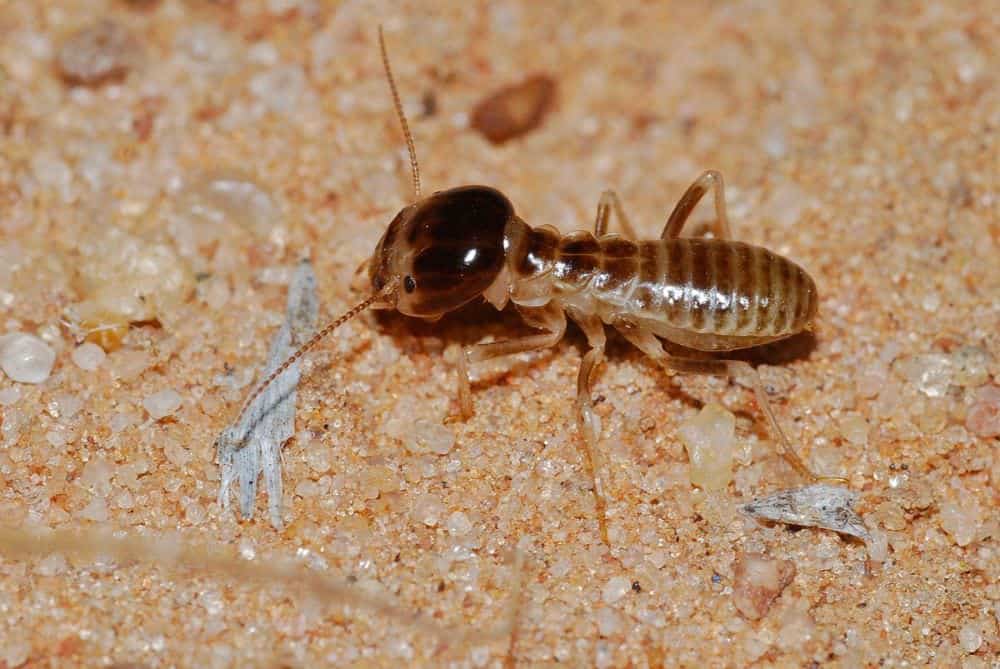
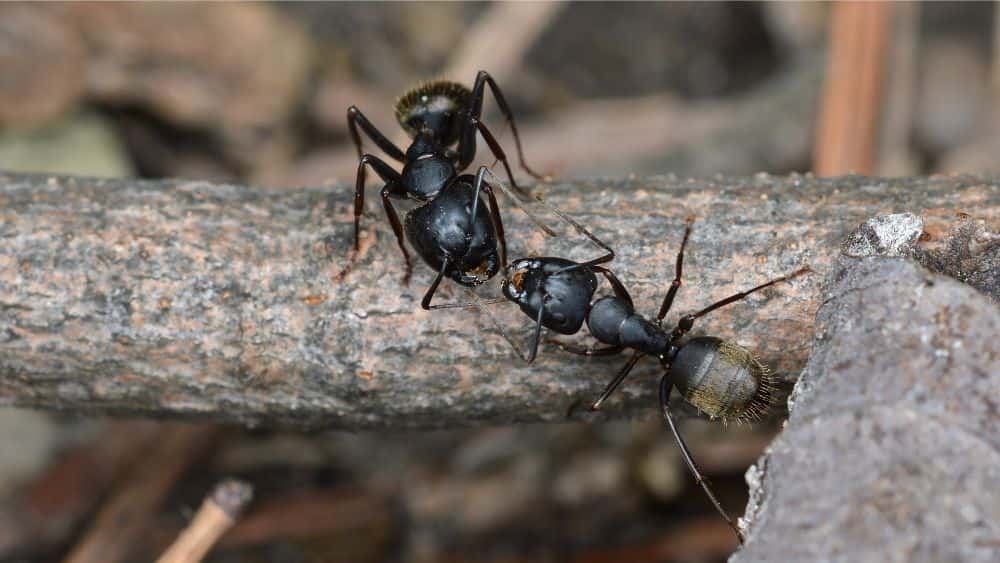
The termite has long, uniform wings about double the length of its body. The flying ant has unequal wings, the top set being longer than the bottom set. You may see flying ants in the home, but your chances of seeing a flying termite inside are much less likely.
Termites eat cellulose only. They won’t be stopping by to feast on crumbs in the kitchen. Ants, on the other hand, are omnivores and will readily eat any debris that they can find. Simply cleaning up your space can have a huge impact on whether or not ants linger in the area.
Termites eat wood. Rather than eat the wood, the carpenter ants are simply excavating it. They create complex tunnel systems in wood that compromise the soundness of the structure. Though they live in the wood, they continue to eat sugars and proteins, even as they are burrowing through your wooden structures.
The likelihood of coming across a termite in action is pretty low—unless you discover the colony or expose the area they’re working in. They have very little reason to leave their space until they go to swarm. That is when you’ll see them.
Carpenter ants (as well as other ants) will leave their space to search for food. You are much more likely to come across them during their venture out for sustenance.
Side by side, the differences outnumber the similarities. Try to trap one of the flying pests in a transparent container, such as a old glass jar. Check its features with those described above. With a clear idea of what pest you have on your hands, you can begin to formulate a plan of attack.
Flying Ant or Termite—Take Action
It’s just good practice to know what you’re dealing with. You can strike up a plan and begin to repair any damage to your property while mitigating further problems. For more information on identifying a potential pest problem in your home, this article is well worth a read.
At the end of the day—if you have carpenter ants or termites—you have a pest problem that needs to be dealt with. You may choose to pick up a reputable product and do the pest treatments yourself. Alternatively, and the best solution if you have an infestation, bring in the professionals, and have them eradicate the problem.
Whatever route you take, ignoring the pests and hoping the problem will just go away won’t get you anywhere. Need more information on how to deal with a termite problem, including product recommendations? Take a look at the other articles here on termites and you’ll be on your way to having them under control in no time at all.

